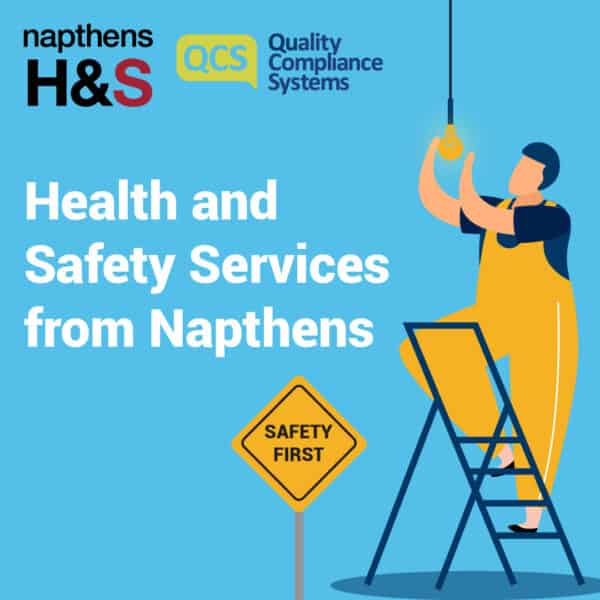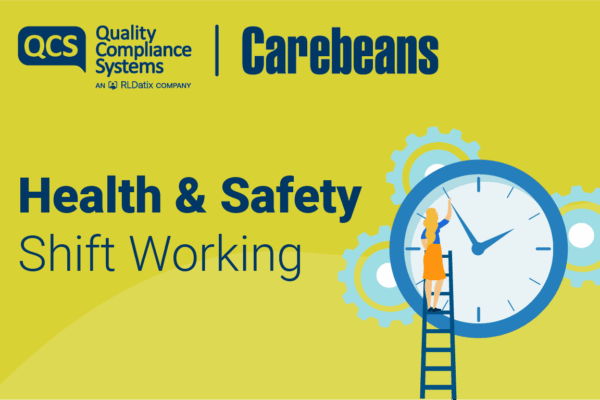Download the Monthly H&S Review by our partner, Napthens here
DOWNLOAD NOW
Alternatively, read the update here:
With the easing of coronavirus restrictions, it is still important to manage the risk of coronavirus within the workplace. By ensuring that adequate ventilation and air conditioning is in place and that your coronavirus risk assessment has been reviewed and updated in relation to the easing of restrictions, can help to reduce the risk of spreading coronavirus in workplaces. It may be that you still chose to implement one-way systems, hand sanitising stations and enhanced cleaning and hygiene protocols, the important factor is that they are recorded in your coronavirus risk assessment and communicated to all your employees. The Health and Safety Executive are
continuing to carry out their COVID spot checks on organisations.
This month’s blog is on Working at Height and specifically the recently released LA455 Safe Use of Ladders and Stepladders – A brief
Guide. This guidance replaces the HSE Guidance Document INDG455 that you may have been previously familiar with. The new LA455
Guidance Document has been jointly produced by the Health and Safety Executive (HSE) and the Ladder Association.
In summary, it now emphasises the importance of training workers in ladder use and provides greater guidance on the many different types of portable ladders that are available. For example, over the last few years I have noticed telescopic ladders are becoming more popular for some workers and trades. Due to the many moving parts, such as the lock out mechanisms, it is important that all sections are checked to ensure they are operating correctly, and the mechanisms do lock out. In addition, this type of ladder has important working parts inside the ladder itself. Therefore, it is important that if a worker has any doubt about the integrity of the hidden the mechanism, then the ladder is not used and is reported and labelled as faulty.
As an operator of services in the care sector it is likely that maintenance and facilities workers will at some point use a ladder or stepladder as part of their work, such as changing a light bulb or accessing suspended ceiling tiles. Remember, ladders and stepladders are not banned and can be an appropriate option for short duration, low risk tasks – but they should not be your first choice for working at height. Your risk assessment should detail the thought process you have gone through to determine that the use of ladders or stepladders is appropriate. As with all risks the first consideration is to eliminate working at height. Where this is not possible, then consideration should be given to other equipment offering higher levels of fall protection, such as mobile access towers. However, more in-depth training is required from an external governing body such as PASMA, to ensure users have the knowledge, skills, and experience to safely erect the tower and work from it. However, if your working at height risk assessment shows that using equipment offering higher levels of fall protection is not practicable because the work is of short duration (less than 30 minutes) and of low risk then ladders or stepladders can be used by those workers who are competent; they have the necessary experience, knowledge, skills and qualifications to use the equipment. The important factor for deciding if ladders or stepladders are to be used is the risk rather than the short duration.
It is important to remember that as a business owner or care service operator, you are responsible for the provision of a safe environment and the provision of safe equipment, this includes ladders and stepladders. All ladder and stepladder users should carry out a pre-use check to identify any obvious defects which may lead to the ladder being unsafe to use. In addition to pre-use checks, a detailed visual inspection should be carried out at fixed and regular intervals, these checks must be recorded, and it is good practice to create a ladder register for this purpose. The register should also detail the date of purchase, make, model and ladder standard. The detailed visual inspection will be typically detailed in the manufacturer’s instruction manual.
A prosecution back in 2019 highlights the importance of planning work at height and the importance that equipment provided for working at height is safe to use. An employee suffered a serious injury to the elbow after falling 2 metres from a ladder when it failed whilst they were using it. The following HSE investigation found the company had failed to ensure that work at height was properly planned and managed and that the company had also failed to ensure that equipment provided for work at height was inspected at regular intervals and safe for use. As a result, the company pleaded guilty to breaching Section 2(1) of the Health and Safety at Work etc. Act 1974, fined £120,000 with £5,155.80 in costs.
As a reminder, section 2(1) of the Health and Safety at Work etc. Act 1974, states “it shall be the duty of every employer to ensure so far
as is reasonably practicable, the health, safety and welfare at work of all his employees”.
As an employer in the care sector, or any sector for that matter, there is a duty to have identified all work at height activities and have implemented a suitable and sufficient risk assessment. You should take a look at your existing arrangements; ensure equipment is adequately maintained, and ensure staff are adequately trained and competent in ladder and stepladder use. Records of this training
should be kept.
The ladder Association offers a suite of training courses for the purpose of demonstrating that your users are competent. Courses available, amongst others are Ladders & Stepladders for users and Ladders and Stepladders inspection. Further information can be
obtained from the ladder association website – https://ladderassociation.org.uk/training/






